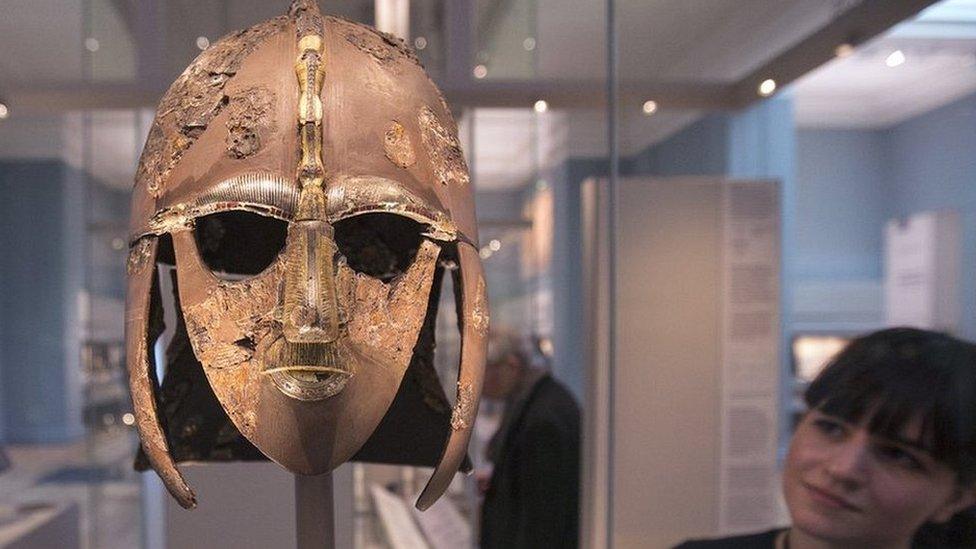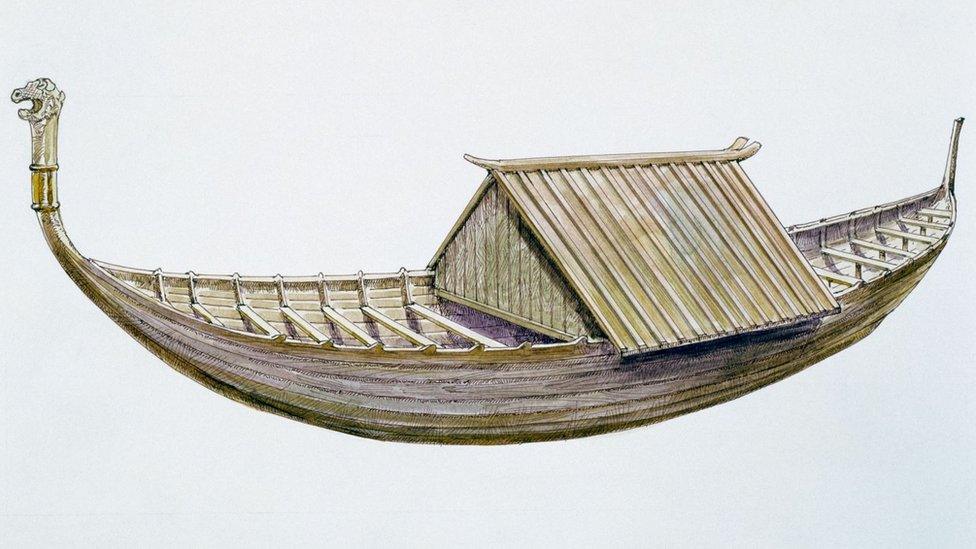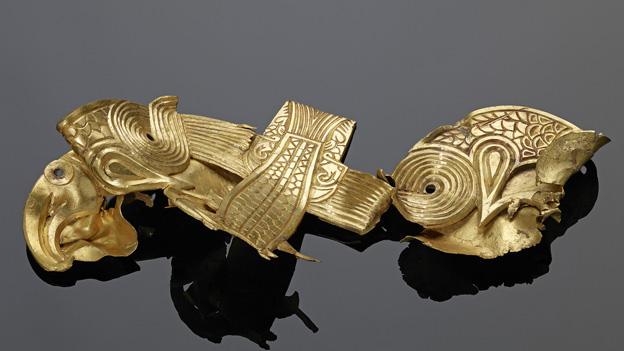Treasure status for Norfolk Anglo-Saxon finds
- Published

The vervels, or hawking rings, were used to tether birds of prey
Archaeological finds, used to tether birds of prey and found by metal detectorists, have been declared treasure.
Silver vervels, a jewel-encrusted gold sword mount and silver-gilt fragments of a sword handle were all put before the senior coroner for Norfolk.
The pieces were all found by members of the public using metal detectors.
The British Museum has said Norwich Castle Museum would like to acquire the vervels and sword pommel fragments.
The vervels - silver rings which would have been attached to falcons' leather straps - are thought to date from 1585-1638.
They are engraved with the inscription, in Roman capitals, of "Thomas" and "Hyrne", and could have belonged to Sir Thomas Hyrne of Norwich and Haveringland, the treasure inquest heard.
They were found in Beetley, near Dereham, in October.
Sword displayed
The Norwich inquest also heard how five fragments of the silver-gilt sword handle's pommel, from the 8th Century, were discovered in September in Wicklewood, near Wymondham.
It is thought the fragments could be part of an artefact already on display at the British Museum.
Coroner Jacqueline Lake told how an Anglo-Saxon gold pyramidal mount inlaid with garnets - which could have been used to secure a sword to its scabbard - was found in September in Alby-with-Thwaite.
A report from Norfolk County Council's finds liaison officer and a British Museum expert said the mount was "almost identical" to two others found in the Staffordshire Hoard, the largest collection of Anglo-Saxon gold ever found.
Similar mounts had also been found at Sutton Hoo - the Anglo-Saxon ship burial site near Woodbridge in Suffolk - although they are not commonly found in graves, the hearing was told.
Anyone who finds gold or silver artefacts thought to be more than 300 years old must report them under the 1996 Treasure Act.
- Published6 October 2018

- Published29 May 2018

- Published7 April 2018

- Published8 November 2017

- Published12 July 2015
